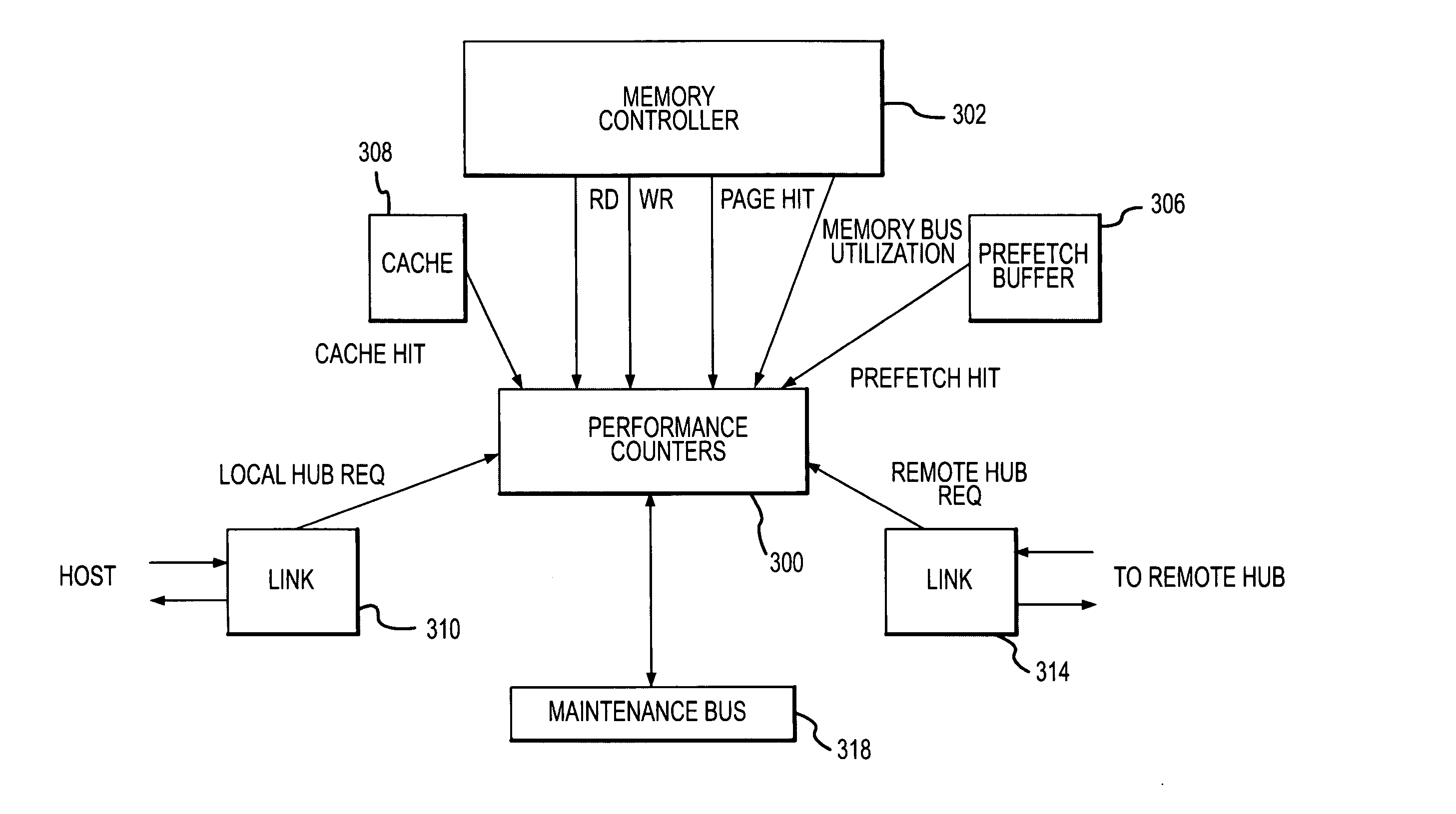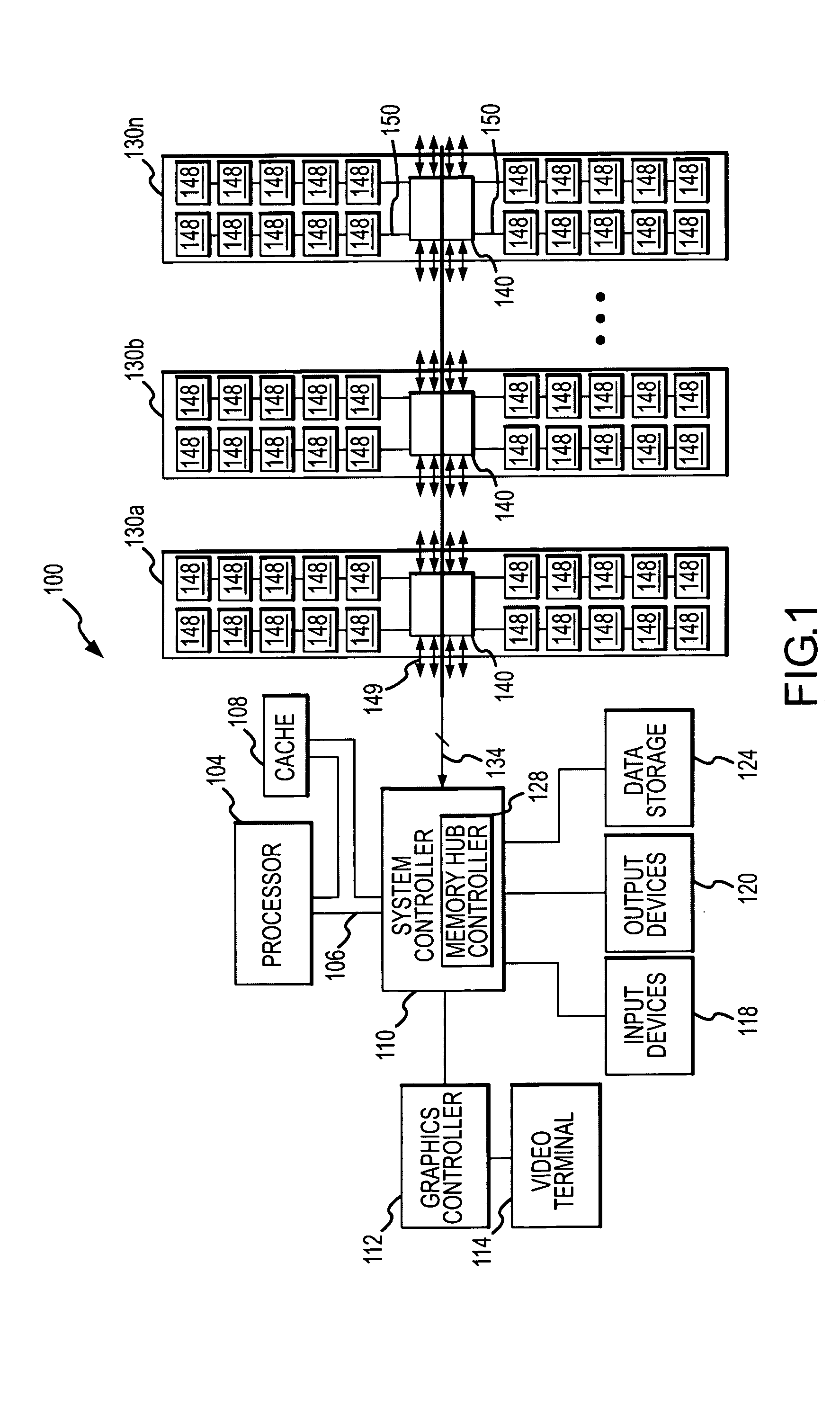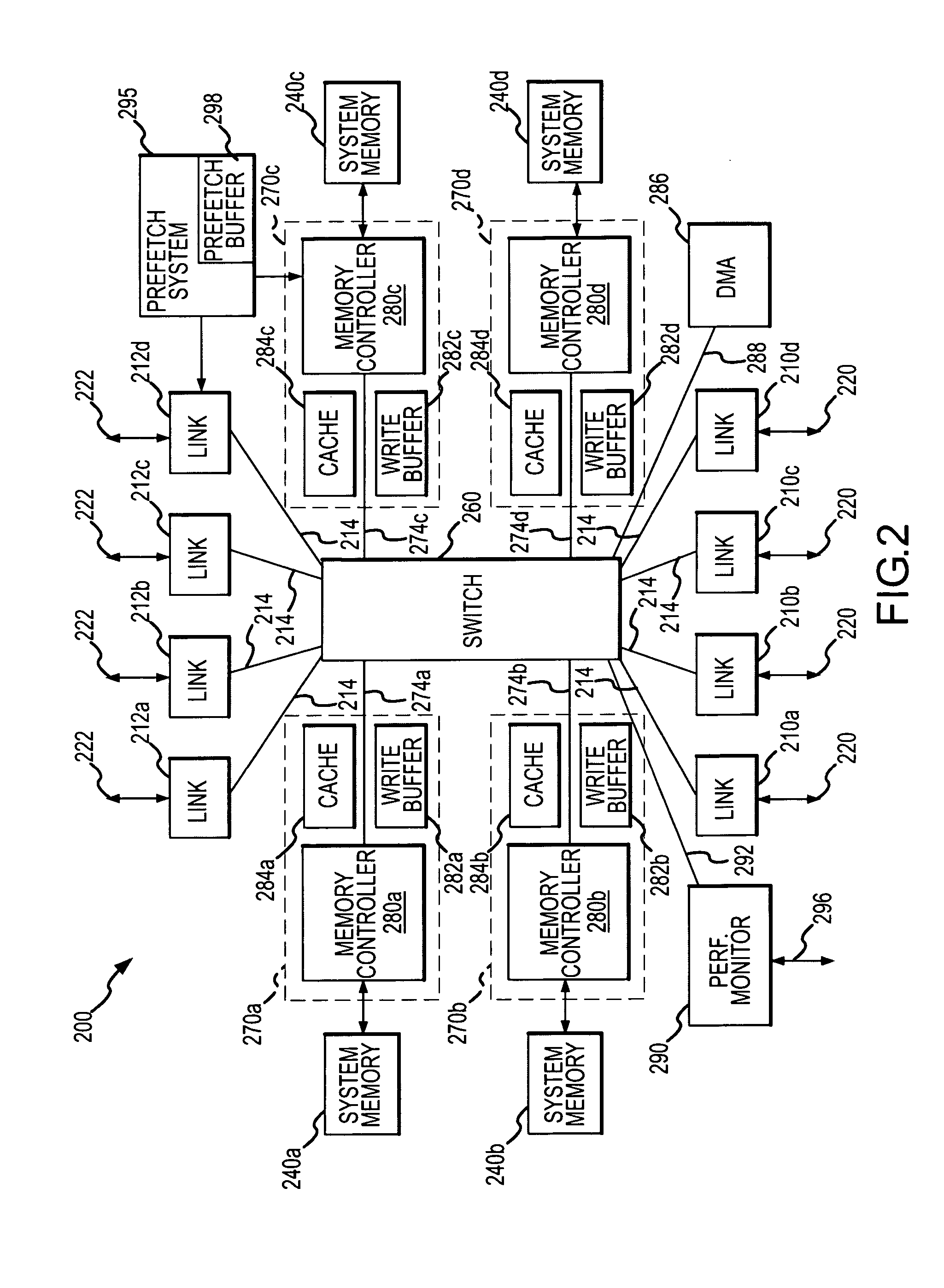Memory hub and method for memory system performance monitoring
a memory system and hub technology, applied in the field of computer systems, can solve the problems of slow memory controller and memory device speed, limiting data bandwidth between the processor and the memory device, and increasing the operating speed of processors,
- Summary
- Abstract
- Description
- Claims
- Application Information
AI Technical Summary
Benefits of technology
Problems solved by technology
Method used
Image
Examples
Embodiment Construction
[0017] A computer system 100 according to one example of the invention is shown in FIG. 1. The computer system 100 includes a processor 104 for performing various computing functions, such as executing specific software to perform specific calculations or tasks. The processor 104 includes a processor bus 106 that normally includes an address bus, a control bus, and a data bus. The processor bus 106 is typically coupled to cache memory 108, which, as previously mentioned, is usually static random access memory (“SRAM”). Finally, the processor bus 106 is coupled to a system controller 110, which is also sometimes referred to as a “North Bridge” or “memory controller.”
[0018] The system controller 110 serves as a communications path to the processor 104 for a variety of other components. More specifically, the system controller 110 includes a graphics port that is typically coupled to a graphics controller 112, which is, in turn, coupled to a video terminal 114. The system controller 11...
PUM
 Login to View More
Login to View More Abstract
Description
Claims
Application Information
 Login to View More
Login to View More - R&D
- Intellectual Property
- Life Sciences
- Materials
- Tech Scout
- Unparalleled Data Quality
- Higher Quality Content
- 60% Fewer Hallucinations
Browse by: Latest US Patents, China's latest patents, Technical Efficacy Thesaurus, Application Domain, Technology Topic, Popular Technical Reports.
© 2025 PatSnap. All rights reserved.Legal|Privacy policy|Modern Slavery Act Transparency Statement|Sitemap|About US| Contact US: help@patsnap.com



